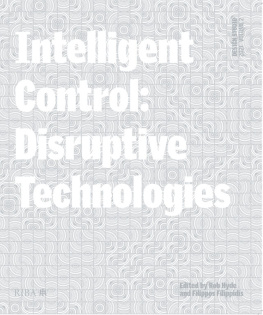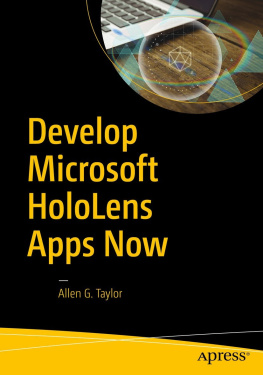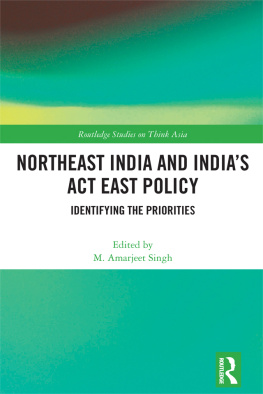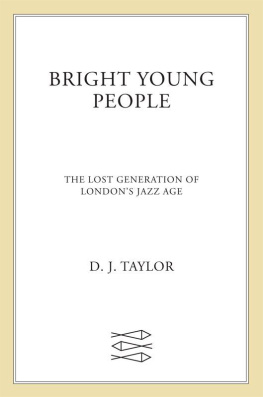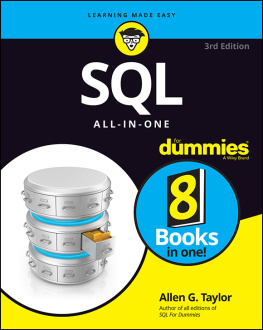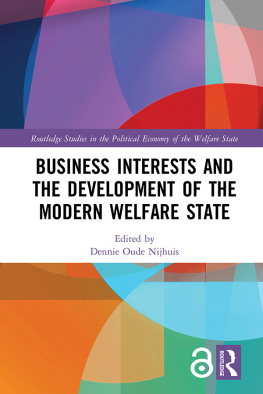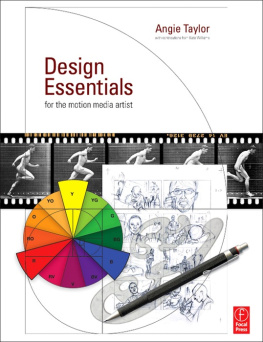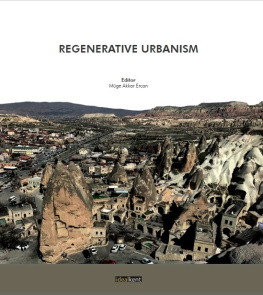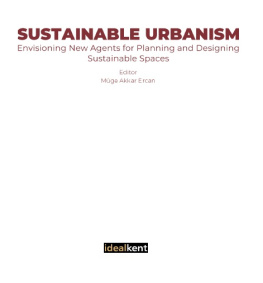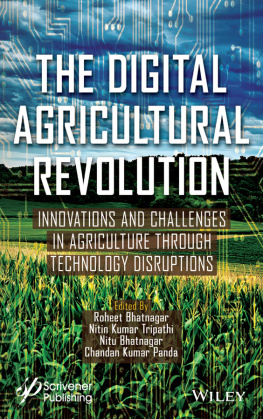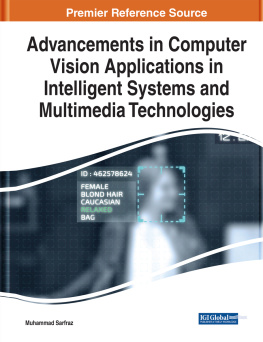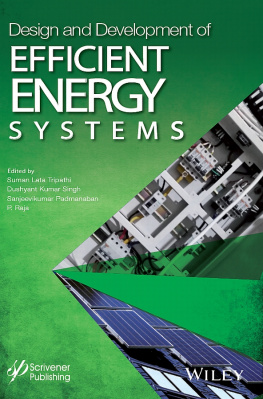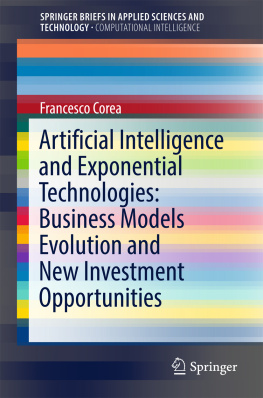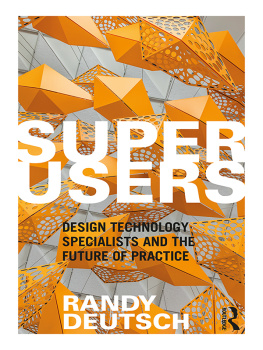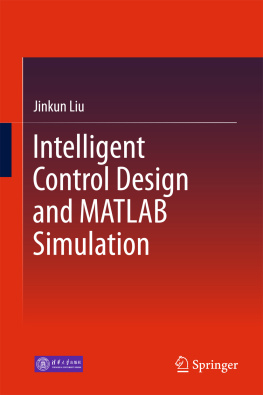
DESIGN STUDIO
2021 VOLUME 2
Design Studio Vol. 2 Intelligent Control: Disruptive Technologies is printed on Fenner Colorset Nero 270gsm and Revive Offset Recycled 120gsm paper, FSC Recycled 100% post-consumer waste. Papers Carbon Balanced by the World Land Trust. Printed with eco-friendly high-quality vegetable-based inks by Pureprint Group, the world's first carbon neutral printer.
RIBA Publishing, 2021
Published by RIBA Publishing, 66 Portland Place, London, W1B 1AD
ISBN 9781859469705
ISSN: 2634-4653
The rights of rob Hyde and Filippos Filippidis to be identified as the Editors of this Work have been asserted in accordance with the Copyright, Designs and Patents Act 1988 sections 77 and 78.
All rights reserved. No part of this publication may be reproduced, stored in a retrieval system, or transmitted, in any form or by any means, electronic, mechanical, photocopying, recording or otherwise, without prior permission of the copyright owner.
British Library Cataloguing-in-Publication Data
A catalogue record for this book is available from the British Library.
Commissioning Editor: Alex White Assistant Editors: Clare Holloway and Lizzy Silverton Production: Sarah-Louise Deazley Designed and typeset by Linda Byrne Printed and bound by Pureprint Group Ltd Cover image courtesy of The Living
While every effort has been made to check the accuracy and quality of the information given in this publication, neither the Author(s), Editor(s) nor the Publisher accept any responsibility for the subsequent use of this information, for any errors or omissions that it may contain, or for any misunderstandings arising from it.
www.ribapublishing.com
DOI: 10.4324/9781003212751
Rob Hyde and Filippos Filippidis
ARTICLES
Ulysses Sengupta, Eric Cheung., Solon Solomou, Sigita Zigure, Mahmud Tantoush, May Bassanino and Rob Hyde
Sandra Youkhana and Luke Caspar Pearson
Danil Nagy
Mette Ramsgaard Thomsen
Stefana Parascho
Mollie Claypool
Soomeen Hahm
PROFILES
Austrian Institute of Technology (AIT) City Intelligence Lab (CIL)
Bryden Wood
Odico Construction Robotics
The Living
CASE STUDIES
Hawkins\Brown
LASSA Architects
SHoP Architects
Kostas Terzidis
Guide
Intelligent Control: Disruptive Technologies

Rob Hyde is a chartered architect and academic at the Manchester School of Architecture, where he co-founded/co-directs the Complexity, Planning and Urbanism research laboratory [CPU]lab and co-leads its aligned taught design studio [CPU]ai. Previously leading the masters Professional Studies programme as well as on Employment, Employability & Enterprise and on Internationalisation, his current leadership is on Knowledge Exchange and impact in relation to applied research + innovation and enterprise.
Operating at the convergence of academia and industry, his research interests focus on Socio-Technical Transitions and Urban Transformations into Sustainable Future Cities/Place and the stakeholders, organisations and transdisciplinary Professional Identities/knowledge that shape it. He is professionally active across diverse cross-disciplinary networks/committees including GMCC, AIA and RIBA. A member of RIBANW Regional Council [Chair Practice & Education Committee] and RIBA Education Committee, he is currently RIBA Research + Knowledge Champion for the Presidents Fact-Finding Mission forming the foundation to RIBA's 2034 masterplan strategies.
Recent publications include Defining Contemporary Professionalism (RIBA Publishing, 2019).
twitter.com/RobHydeRIBA
instagram.com/RobHydeRIBA
linkedin.com/in/RobHydeRIBA

Filippos Filippidis is an architect and computational design specialist working at the intersection of design and technology. His experience in architectural practice has varied in design scales ranging from web and desktop applications to material research and installations to residential buildings and infrastructure projects. He has worked at firms such as ecoLogicStudio, RoboFold, Foster + Partners and Bryden Wood, and has taught design studios and workshops at the University of Brighton, the Manchester School of Architecture and the AA Visiting School in Melbourne. He is the founder of Continuous-Inputs, a design technology consultancy, and is an Associate Lecturer at the Manchester School of Architecture, where he teaches in the MArch [CPU]ai atelier.
twitter.com/phil_pidis
instagram.com/phil_pidis
linkedin.com/in/filipposfilippidis
We wish to acknowledge our indebtedness to Aneta and Danae for their ongoing encouragement, particularly over this last year. Our thanks also to Helen Castle, Alex White, Clare Holloway and Sarah-Louise Deazley, along with all at RIBA Publishing, for their constant professionalism, our families for their continued support and, of course, to our fantastic collaborators, without whose inspirational work this book would not have been possible.
We aim for students to enter practice in a state of 'Intelligent Control' in the specialisms they engage with to disrupt current practices and help drive the constant repositioning of the architect.
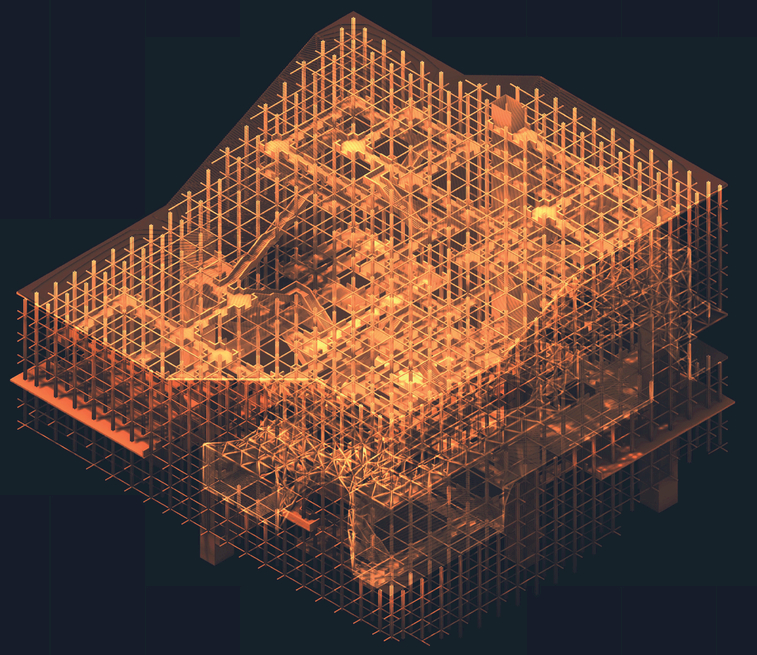
Mahmud Tairtoiish, Master's design project with the atelier CPU (Complexity, Planning and Urbanismi, Manchester School of Architecture, 2018. Ecologically resilient architecture - generative structural solutions for interacting adaptive elements and flexible programmes. Designed using Grasshopper 3D and Python programming.
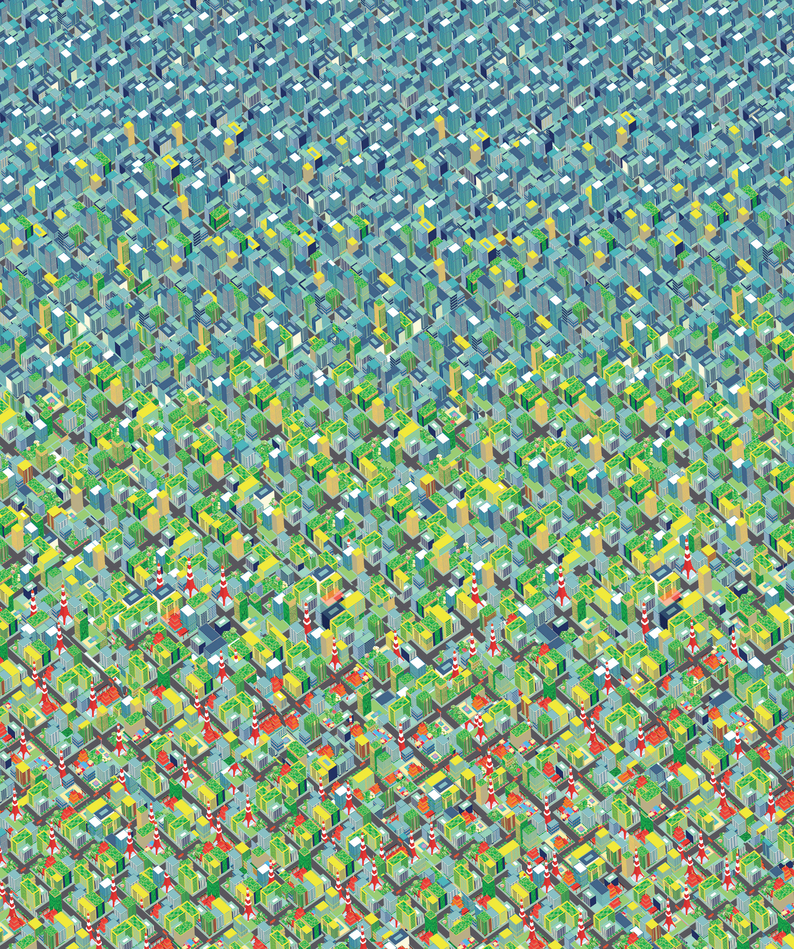
Procedural Liveability. Screenshot from game by Aafreen Fathima, Videogame Urbanism 202021, a game exploring resilience and liveability of our cities and their ability to adapt to adverse conditions.
Rob Hyde and Filippos Filippidis
As a society, we are in a paradigm shift from the digital disruption of the Third Industrial Revolution as it evolves into the automation and smart technologies of the Fourth Industrial Revolution. we are bombarded with an ever-expanding and bewildering lexicon of new buzzwords. Each development simultaneously brings threats created and opportunities afforded by rapidly emerging technological advancements in everything from day-to-day working practices within both academia and practice to the great existential challenges faced by humanity.
The Architecture, Engineering and Construction (AEC) industry is increasingly influenced and affected by these wider societal shifts and associated debates, but is historically extremely slow to change its 'lagging performance ... a direct result of the fundamental rules and characteristics of the construction market and the industry dynamics that occur in response to them'. in order to demonstrate value through both efficiency and effectiveness within or beyond current areas of operation.
As part of this wider AEC ecosystem, architects find themselves restricted by its slowness, which is compounded by their diminishing influence within it. However, technological disruption provides opportunity for the architect to evolve and address current marginalisation. This can be achieved by demonstrating value in both traditional and non-traditional roles, services and diverse fields of operation through enhanced and increased productivity, creativity, design potential, evidence-based decision-making, streamlined delivery, collaboration, stakeholder engagement and much more. Repositioning the role and definition of the architect in both how and where we practise could also help drive the advancement of the wider AEC sector by addressing key internal systemic issues.
Next page
